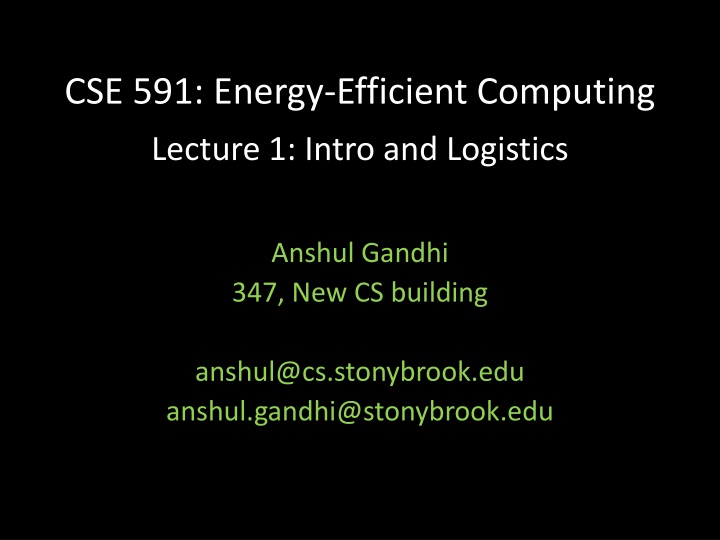
Energy-Efficient Computing: Overview and Data Center Insights
Explore the world of energy-efficient computing with insights into data centers and server statistics from tech giants like Google, Microsoft, and Amazon. Learn about the concept of Blackle for energy savings and delve into the optimization of power usage in computing environments.
Download Presentation

Please find below an Image/Link to download the presentation.
The content on the website is provided AS IS for your information and personal use only. It may not be sold, licensed, or shared on other websites without obtaining consent from the author. If you encounter any issues during the download, it is possible that the publisher has removed the file from their server.
You are allowed to download the files provided on this website for personal or commercial use, subject to the condition that they are used lawfully. All files are the property of their respective owners.
The content on the website is provided AS IS for your information and personal use only. It may not be sold, licensed, or shared on other websites without obtaining consent from the author.
E N D
Presentation Transcript
CSE 591: Energy-Efficient Computing Lecture 1: Intro and Logistics Anshul Gandhi 347, New CS building anshul@cs.stonybrook.edu anshul.gandhi@stonybrook.edu
Blackle saves energy because the screen is predominantly black. "Image displayed is primarily a function of the user's color settings and desktop graphics, as well as the color and size of open application windows; a given monitor requires more power to display a white (or light) screen than a black (or dark) screen." Roberson et al, 2002
Blackle saves energy because the screen is predominantly black. "Image displayed is primarily a function of the user's color settings and desktop graphics, as well as the color and size of open application windows; a given monitor requires more power to display a white (or light) screen than a black (or dark) screen." Roberson et al, 2002
Data Centers: How many servers? Google: 1M + (2013) MS: approximately 1M (2013) Amazon: approximately 1M (2013) FB, Yahoo, etc: less than 1M Baidu: more than 1M 50M servers in DCs worldwide 300 W per server
